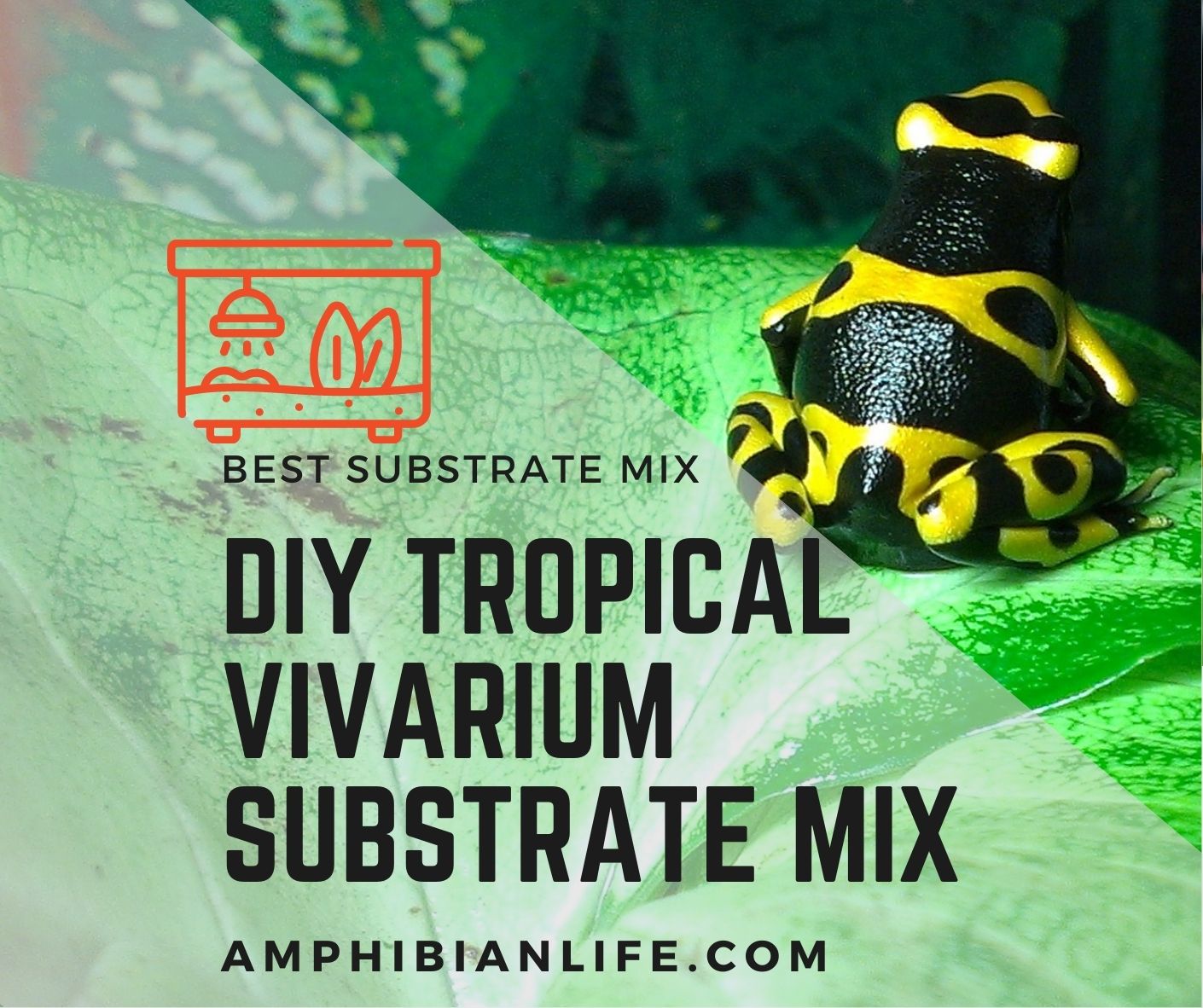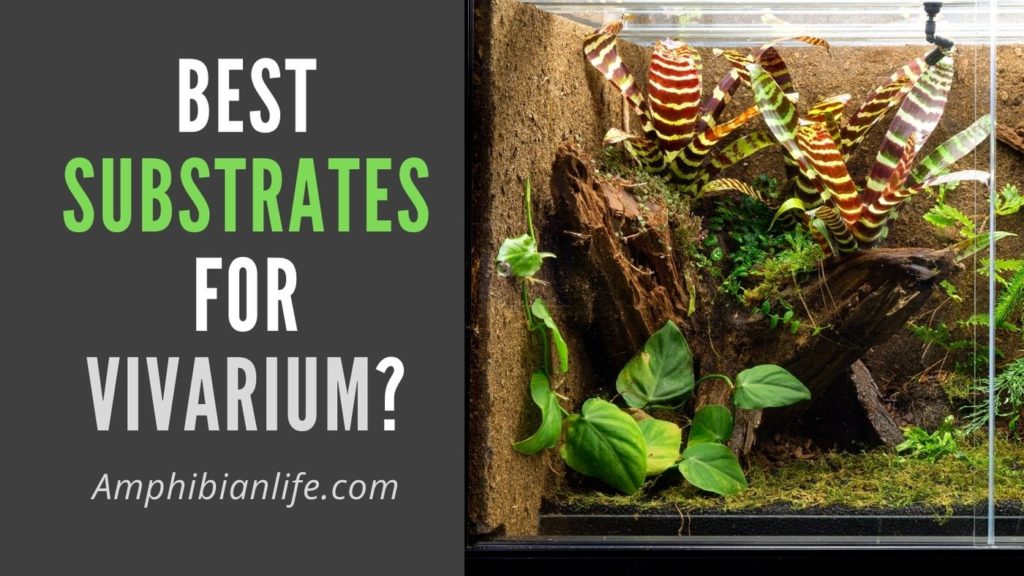
The best vivarium substrate mixtures will depend on the specific needs and preferences of the animal or plant species that will be living in the enclosure. However, here are some common substrate mixtures used in vivariums:
- Coconut coir and sphagnum moss: This mixture is often used in tropical and humid environments, as it retains moisture well and promotes plant root growth.
- Sand and clay: This mixture is often used for desert or arid environments, as it promotes good drainage and stability for burrowing animals.
- Bark chips and soil: This mixture is often used for forest and woodland environments, as it provides a natural and diverse habitat for animals and promotes healthy plant growth.
- Peat moss and vermiculite: This mixture is often used for reptile and amphibian eggs, as it retains moisture and provides a suitable substrate for egg laying and hatching.
- Gravel and charcoal: This mixture is often used for aquatic environments, as it provides a suitable substrate for plants and helps to maintain water quality.
It’s important to research the specific needs and preferences of the animal or plant species that will be living in the vivarium, and choose a substrate mixture that will meet those needs. It’s also important to monitor the vivarium regularly and make adjustments to the substrate as needed to maintain a healthy and comfortable environment for the inhabitants.

How do you make a vivarium substrate?
The method for making a vivarium substrate will depend on the specific type of substrate you want to create. Here are the general steps for making a substrate mixture using coconut coir and sphagnum moss:
Materials:
- Coconut coir
- Sphagnum moss
- Large container or bucket
- Water
- Mixing tool (such as a trowel or garden fork)
Steps:
- Soak the coconut coir in water until it expands and becomes soft. Drain any excess water.
- Add the sphagnum moss to the container or bucket and wet it with water.
- Add the expanded coconut coir to the container or bucket with the wet sphagnum moss.
- Use the mixing tool to blend the two materials together until they are evenly mixed.
- Adjust the moisture level of the mixture as needed, depending on the specific needs of the animal or plant species that will be living in the vivarium. For example, some animals may require a drier substrate, while others may require a more humid substrate.
- Fill the vivarium with the substrate mixture to the desired depth.
It’s important to research the specific needs of the animal or plant species that will be living in the vivarium and choose a substrate mixture that will meet those needs. Additionally, it’s important to regularly monitor the vivarium and make adjustments to the substrate as needed to maintain a healthy and comfortable environment for the inhabitants.
Nitrifying Bacteria and its Benefits for Amphibians
Nitrifying bacteria are beneficial bacteria that help maintain a healthy environment for amphibians in their enclosure. These bacteria are responsible for the biological filtration process, which involves converting toxic ammonia and nitrite into less harmful nitrate.
Here are some benefits of nitrifying bacteria for amphibians:
- Helps maintain water quality: Nitrifying bacteria help to remove harmful toxins such as ammonia and nitrite from the water in the amphibian enclosure. This helps to maintain good water quality, which is essential for the health and wellbeing of amphibians.
- Reduces the risk of disease: When the water quality in the amphibian enclosure is poor, it can increase the risk of disease and illness. By maintaining good water quality, nitrifying bacteria can help to reduce the risk of disease and keep amphibians healthy.
- Improves the efficiency of the filtration system: Nitrifying bacteria help to improve the efficiency of the filtration system in the amphibian enclosure. This means that the filter will be able to process more water and remove more toxins, which will lead to a healthier environment for amphibians.
- Creates a stable environment: Nitrifying bacteria help to create a stable environment in the amphibian enclosure by maintaining consistent water quality. This helps to reduce stress on the amphibians and creates a more natural and comfortable environment for them.
Overall, nitrifying bacteria play an important role in maintaining a healthy environment for amphibians in captivity. It’s important to ensure that the enclosure is properly cycled and has a sufficient population of nitrifying bacteria to maintain good water quality.
For Further Reading
- Best Vivarium Plants for beginners
- Vivarium Plants for Beginners (20 Easy Vivarium Plants)
- Terrarium, vivarium, paludariums and other Ariums
Substrate Ingredients for Vivariums
There are many different substrate ingredients that can be used for vivariums, and the best choice will depend on the specific needs of the animal or plant species living in the enclosure. Here are some common substrate ingredients for vivariums:
- Coconut coir: Coconut coir is a popular substrate ingredient for vivariums as it retains moisture well and provides good drainage. It is also easy to work with and can be mixed with other substrate ingredients to create a customized substrate mixture.
- Sphagnum moss: Sphagnum moss is another popular substrate ingredient for vivariums as it helps to retain moisture and provides a natural appearance. It is often used in conjunction with other substrate ingredients to create a layered substrate system.
- Orchid bark: Orchid bark is a natural substrate ingredient that provides good drainage and helps to create a natural appearance. It is often used in conjunction with other substrate ingredients to create a layered substrate system.
- Gravel or rocks: Gravel or rocks can be used as a substrate ingredient for animals that require a drier environment, such as desert species. It provides good drainage and a natural appearance.
- Sand: Sand is a popular substrate ingredient for desert species, as it provides a natural appearance and good drainage. It should be thoroughly cleaned and sterilized before use to prevent the buildup of harmful bacteria.
- Leaf litter: Leaf litter provides a natural appearance and helps to create a diverse environment for animals that require a forested habitat. It also helps to retain moisture and provides a source of food for microorganisms.
It’s important to research the specific needs of the animal or plant species living in the vivarium and choose a substrate mixture that will meet those needs. Additionally, it’s important to regularly monitor the vivarium and make adjustments to the substrate as needed to maintain a healthy and comfortable environment for the inhabitants.
What is the best soil for terrariums?
The best soil for a terrarium will depend on the specific needs of the plants or animals that will be living in the terrarium. Generally, a high-quality potting soil that is free of additives such as pesticides and fertilizers is a good choice for most plants.
Here are some factors to consider when choosing soil for a terrarium:
- Drainage: The soil should provide good drainage to prevent water from accumulating and causing root rot. A mixture of soil and perlite or sand can help to improve drainage.
- Moisture retention: The soil should also be able to retain moisture to ensure that the plants have access to water. A mixture of soil and peat moss or coconut coir can help to improve moisture retention.
- Nutrient content: The soil should have a balanced nutrient content to provide the necessary nutrients for plant growth. Adding organic matter such as compost or worm castings can help to improve the nutrient content of the soil.
- pH balance: The pH of the soil should be appropriate for the specific plants in the terrarium. Most plants prefer a slightly acidic soil with a pH between 6.0 and 7.0.
Some common types of soil that are often used for terrariums include potting soil, cactus soil, and orchid mix. It’s important to choose a soil that is appropriate for the specific needs of the plants or animals that will be living in the terrarium, and to regularly monitor the soil and make adjustments as needed to maintain a healthy and thriving environment.
- Compressed Ground Coconut Husk Fiber
Compressed ground coconut husk fiber is another substrate option that is made from the same material as coco coir/fiber. It is often sold in compressed bricks or blocks that can be expanded by adding water, making it a convenient and space-saving substrate option.
- Ground Palm
Ground palm, orchid bark, and xerimulch (mulch) are other substrate options that are commonly used in terrariums and vivariums. Inert sand and gravel can also be used as a substrate ingredient, but it is important to choose a type that is free of harmful chemicals and impurities.
- Orchid Bark & Xerimulch (Mulch)
Orchid bark and xerimulch are types of substrate that are commonly used in terrariums and vivariums. Orchid bark is a mix of different types of tree bark that provides good drainage and air circulation, making it an excellent substrate for plants that need good drainage. Xerimulch (mulch) is a type of substrate that is made from a mix of materials such as bark, wood chips, and leaves. It is often used in desert or arid environments as it helps to retain moisture in the soil.
- Inert (biologically inactive) Sand & Gravel
Inert sand and gravel are also commonly used as substrate ingredients in terrariums and vivariums. These materials are biologically inactive, meaning they do not contain any nutrients that could harm the plants or animals living in the enclosure. They can be used as a base layer or mixed with other substrates to create a customized substrate blend.
Summary
Ultimately, the best substrate for a terrarium or vivarium will depend on the specific needs of the plants or animals living in the enclosure, as well as personal preferences and aesthetic considerations.
Sources and References
- “Orchid Bark for Growing Orchids.” American Orchid Society, https://www.aos.org/orchids/culture-sheets/orchid-bark.aspx.
- “Xeriscape Mulch for Desert Landscapes.” Arizona Municipal Water Users Association, https://www.amwua.org/landscape/xeriscape-mulch-for-desert-landscapes.
- “Choosing the Right Substrate for Your Reptile or Amphibian.” The Spruce Pets, 14 Nov. 2019, https://www.thesprucepets.com/substrates-for-reptiles-and-amphibians-1238204.
- “Coconut Husk Fiber Substrate for Vivariums.” Josh’s Frogs, https://www.joshsfrogs.com/catalog/blog/2017/09/coconut-husk-fiber-substrate-vivariums/.
